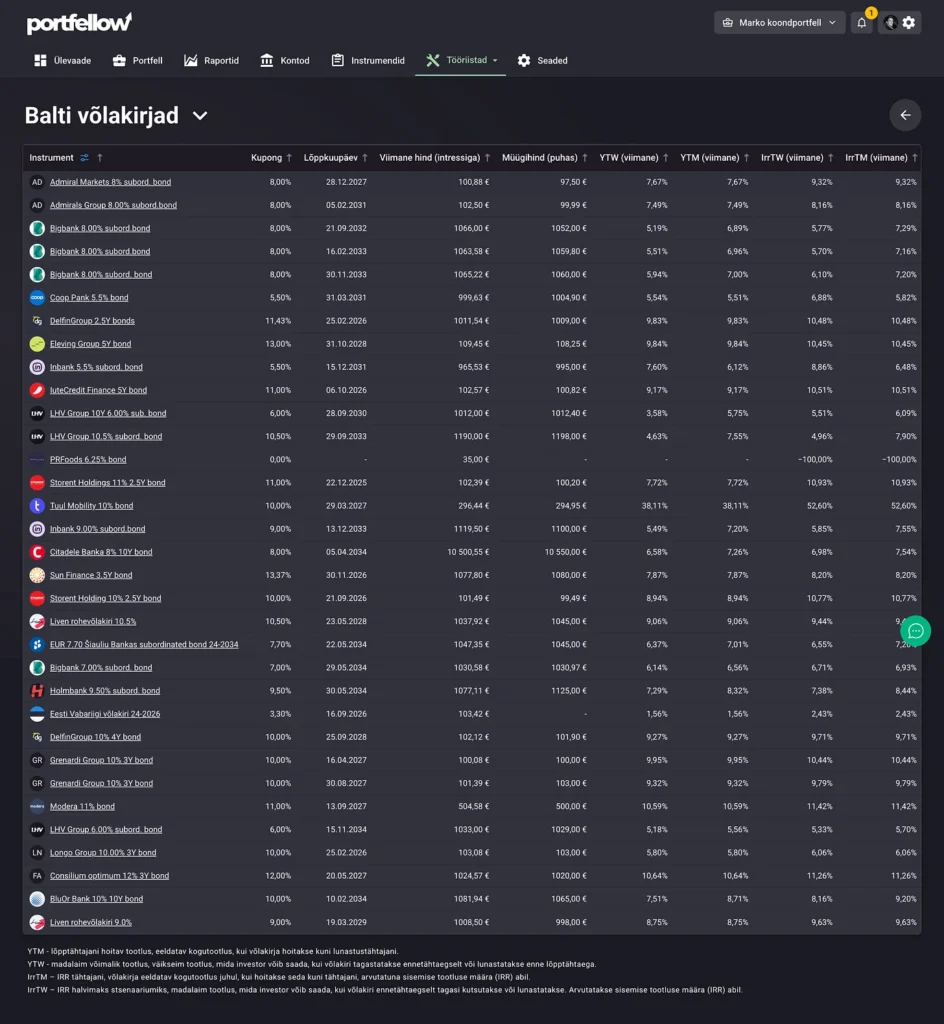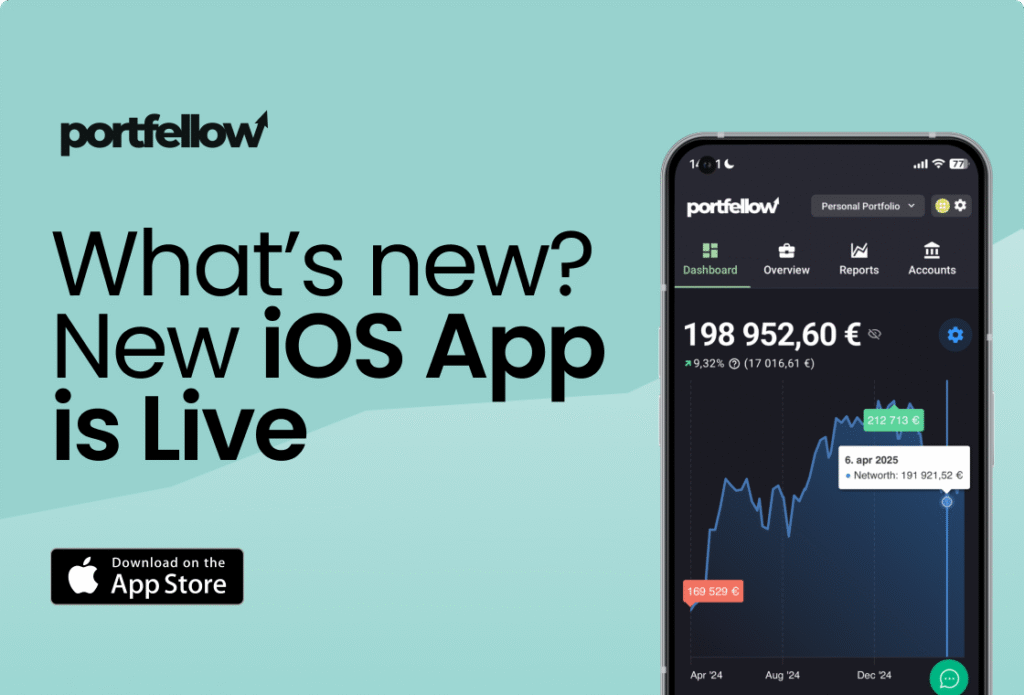
The Baltic bond market in spring 2025 offers a diverse selection. Yields reach up to 11%, and companies span the banking, real estate, and consumer finance sectors. However, a conscious investor should be alert and ask:
Is a high coupon always a good thing?
How can offers be compared effectively?
This article provides a comprehensive overview of the secondary market yield of publicly traded bonds. We also discuss how to evaluate bonds, assess associated risks, and what investors should consider when forming their investment thesis.
Understanding Bonds and the Basics
Recommended Reading on Bonds
Bonds are complex instruments with many nuances that must be understood before investing. It’s crucial to know what lies behind the numbers and yield percentages. The following articles offer a detailed, clearly explained overview of various bond types — including higher-risk junk bonds, subordinated bonds, and AT1 instruments.
Junk Bonds: Overview, Opportunities, and Risks
Subordinated Bonds: Overview, Opportunities, and Risks
AT1 Bonds: Overview, Opportunities, and Risks
If you want similar updates in the future, subscribe to our newsletter.
Disclaimer: This content is for entertainment only and not to be considered investment advice.
TL;DR – What Is a Bond?
A bond is essentially a loan from the investor to a company. The investor lends money and receives interest payments (coupons) until the company repays the bond at maturity or at an early call date.
Key Terms
Face Value: The nominal amount from which interest is calculated, often €1,000.
Market Price: The bond’s current trading price. A price of 102 means €1,020 for a €1,000 face value.
Coupon: Annual interest rate paid on the face value.
Maturity Date: When the principal must be fully repaid — longer terms mean more exposure to market changes.
Call Date: The earliest date the bond can be repurchased by the issuer. Impacts calculations like YTW (Yield to Worst).
Understanding Bond Yields
To compare bonds, look beyond coupons to total yield metrics such as YTM, YTW, and IRR.
YTM (Yield to Maturity): Total yield if the bond is held to maturity.
YTW (Yield to Worst): Most conservative yield if the bond is called early.
IRR TM/IRR TW: Custom metrics by Portfellow considering cash flow timing and reinvestment.
Baltic Bond Market Snapshot (June 1, 2025)
Portfellow offers a regularly updated overview of Baltic-listed bonds, showing all key metrics on one screen.
Compare bonds from Eleving, LHV, DelfinGroup, Bigbank, Coop Pank, and others using YTM, YTW, and IRR.
Yields range from 3% to over 10%, reflecting varying risk levels.
What Can We Learn From Current Market Offers?
Risk and return go hand-in-hand. Higher yields often imply higher credit risk, cyclicality, or subordination. Meanwhile, stable bank and government bonds offer lower yields due to reliability.
Market Examples
Low Risk / Low Yield: Estonian government bond (1.56%), Coop Pank, LHV Group 2030.
High Yield / High Risk: Modera (10.59%), Consilium Optimum (10.64%), Tuul Mobility (38.11%).
Balanced: Bigbank, Inbank, Citadele (6–7%).
Anomalies: Holmbank and BluOr Bank offer 8%+, signaling possible sector or capital structure concerns.
Flexible Comparison Options
Portfellow allows investors to choose what data to see — from basic coupons to advanced metrics (YTW, YTM, IRR), including clean vs dirty pricing.
Bond Term vs. Yield (YTW)
Longer terms usually demand higher yields due to added uncertainty. YTW calculates yield under the worst-case scenario (early redemption).
Short Term + High YTW = Quick but Risky Return
Long Term + Low YTW = Stable but Slow Growth
Your strategy depends on whether you want faster returns or can wait longer.
Current Yield Distribution by Maturity
Short-term (1–3 years): DelfinGroup, Grenardi, Sun Finance – 8–10% YTW.
Medium to Long-term (6–10 years): 6–8% YTW.
Estonian Gov’t Bond: Very low yield regardless of maturity – reflects near-zero risk.
Bond Returns and Risks
Bonds, once favored by conservative institutions, are now attracting risk-tolerant retail investors due to:
Rising base interest rates
Economic uncertainty
Search for real (inflation-adjusted) returns
Key Risks
Credit Risk: Company might default — assess financial health.
Liquidity Risk: Hard to sell before maturity on a small market.
Interest Rate Risk: Rate increases lower bond value, especially for long terms.
Subordination Risk: Subordinated bonds are repaid after others in bankruptcy (e.g. Bigbank, Coop Pank).
Conclusion: What Should Investors Watch?
The Baltic bond market offers compelling options, but success requires awareness and analysis. Don’t just look at coupon rates — also consider:
Realistic returns (YTM)
Worst-case yields (YTW)
Cash flow timing (IRR)
Bond maturity, call options, sector risk, and liquidity
Good news: tools like Portfellow make informed decision-making easier.
Quick Checklist for Investors
Compare YTM, YTW, IRR — don’t focus only on coupons.
Understand the risks — high yield = high risk.
Check maturities, subordination, issuer quality.
Think in terms of your overall portfolio — strategy and risk management.
Disclaimer: This content is not investment advice.



